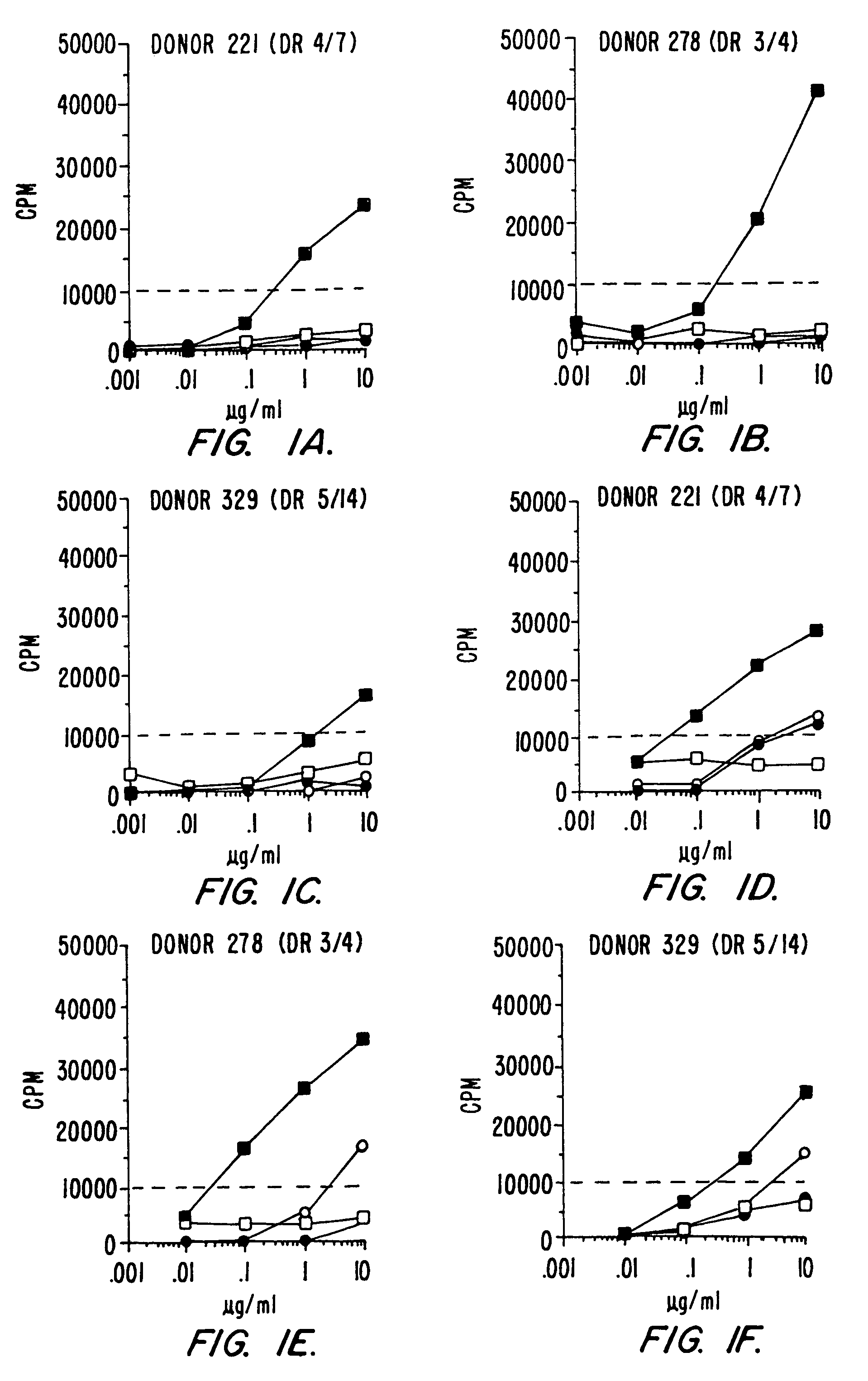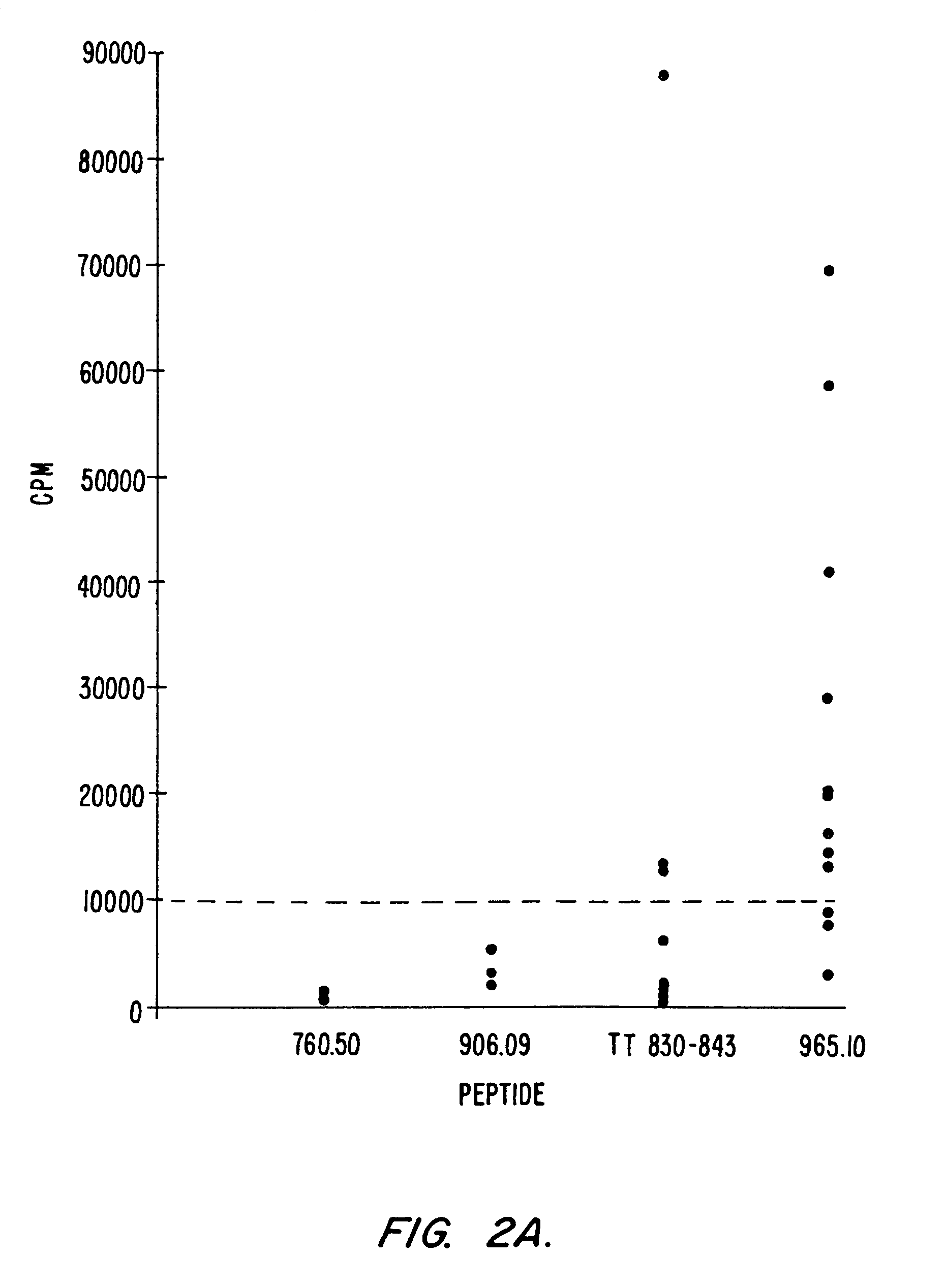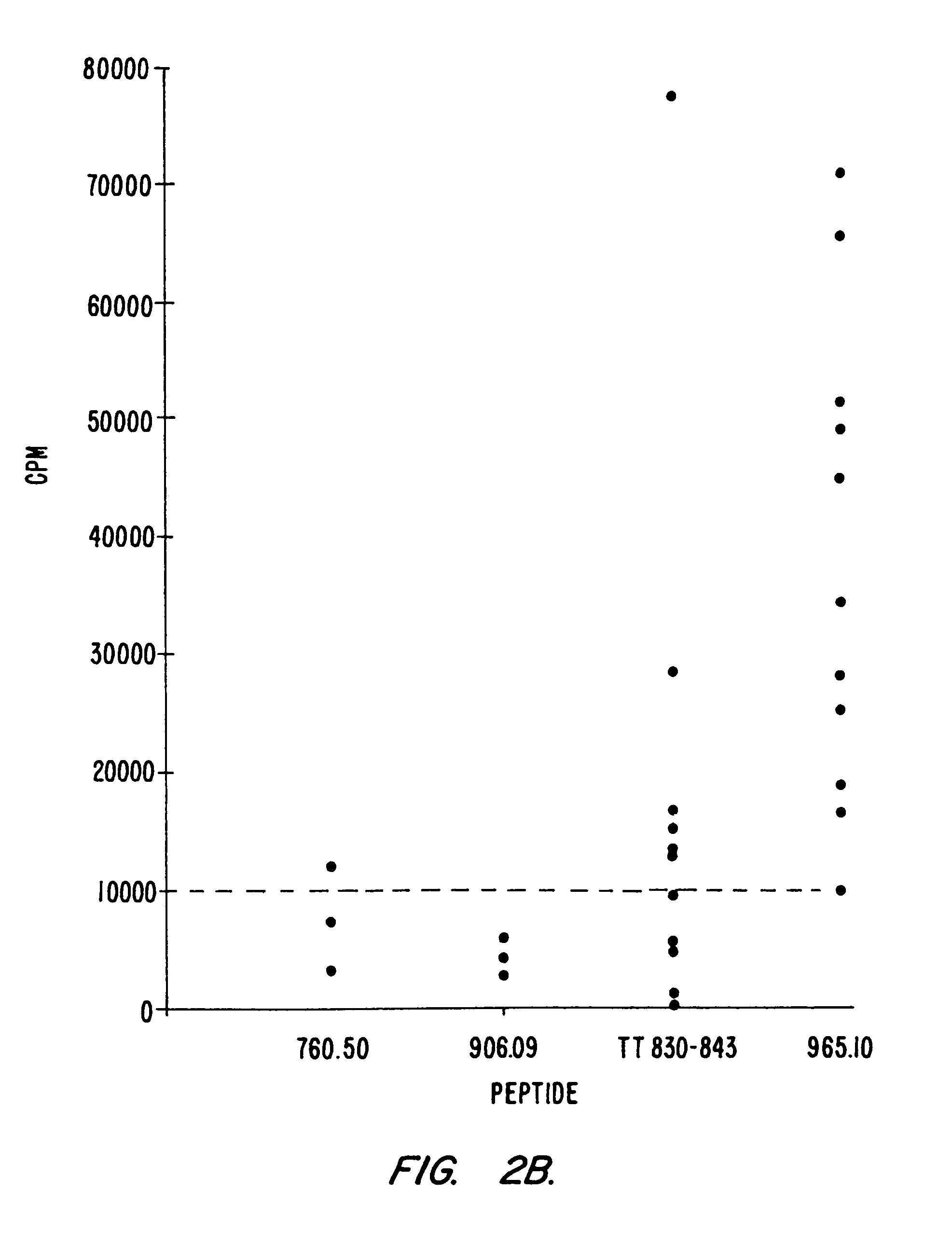Alteration of immune response using pan DR-binding peptides
a technology of pan dr-binding peptides and immune response, which is applied in the field of alteration of immune response using pan dr-binding peptides, can solve problems that are not universal, and achieve the effect of inhibiting immune responses
- Summary
- Abstract
- Description
- Claims
- Application Information
AI Technical Summary
Benefits of technology
Problems solved by technology
Method used
Image
Examples
example i
Experimental Procedures
I. Cell Lines and MHC Purification
[0090]Various cell lines were used as sources of purified human and mouse class II molecules. The following Epstein-Barr virus (EBV) transformed homozygous cell lines were used as sources of human HLA class Ill molecules (Valli et al., J. Clin. Invest. 91, 616–628, 1993): LG2 [DB1*0101 (DR1)]; 3107 [DRB1*1501 (DR2w2b)]; MAT [DRB1*0301 (DR3)]; PREISS [DRB1*0401 (DR4)]; BIN40 [DRB1*0404 (DRw14)]; SWEIG [DRB1*11011 (DR5)]; PITOUT [DRB1*0701 (DR7)]; PF [DQA1*0301 / DQB1*0301 (DQ3.1). In some instances, transfected fibroblasts were used: L416.3 [DRB5*0101 (DR2w2a)]; TR81.19 [DRB3*0101 (DR52a)]; and L257.6 [DRB4*0101 (DRw53)]. For mouse class II molecules, the following cell lines were used: A20 (IAd, IEd) (Sette et al., Science 258, 1801–1804, 1992); CH12 (IAk, IEk) (Sette et al., 1992); LS102.9 (IAs) (Wall et al., Int. Imm. 4, 773–777, 1992); and DB27.4 (IAb) (Wall et al., J. Immuno. 152:4526–4536, 1994).
II. Purification of MHC Mole...
example 2
DR Binding Specificity of “Universal” Peptide Epitopes
[0096]The binding motifs of several murine and human class II MHC alleles have been defined, and motif analysis by sequencing of naturally processed peptides has also recently been described for various class II types (Rudensky et al., Nature 353, 622–627 (1991); Chicz et al., Nature 358, 764–768 (1992); Hunt et al., Science 256, 1817–1820 (1992); Rudensky et al., Nature 359, 429–431 (1992)).
[0097]In the case of DR molecules in particular, it has been shown (Brown et al., Nature 364, 33–39 (1993)) that a large hydrophobic anchor engaging a corresponding hydrophobic pocket of the MHC binding groove is the most crucial determinant of peptide-DR interactions. Several other anchors play definite, albeit less prominent roles and help determine allelic specificity. Recently it has also been emphasized that the peptide backbone of the C-terminal half of the peptide molecule is engaged in direct hydrogen bonding with the walls of the MHC...
example 3
Development of Peptides with High Affinity for Multiple DR Alleles: 760.50 and 760.57
[0101]A number of peptides capable of binding with high affinity to the rheumatoid arthritis associated DR alleles DR1, DR4w4, and DR4w14 were generated. To produce these peptides, we used a strategy initially described by Jardetzky et al., EMBO J. 9:1797–1803 (1990), in which anchor residues that contain side chains critical for the binding to MHC are inserted into a poly-alanine peptide of 13 residues. Two such peptides, designated 760.50 and 760.57, which are described in copending parent application Ser. No. 08 / 121,101 and which were particularly interesting with regard to their broad DR binding specificity. When tested for binding to a panel of 10 purified DR molecules, it was found that, in general, these peptides bound with higher affinity and broader specificity than the natural “universal” epitopes described above (Table II, section B). Neither 760.50 nor 760.57 was completely cross-reactiv...
PUM
| Property | Measurement | Unit |
|---|---|---|
| Magnetic field | aaaaa | aaaaa |
| Temperature | aaaaa | aaaaa |
| Molar density | aaaaa | aaaaa |
Abstract
Description
Claims
Application Information
 Login to View More
Login to View More - R&D
- Intellectual Property
- Life Sciences
- Materials
- Tech Scout
- Unparalleled Data Quality
- Higher Quality Content
- 60% Fewer Hallucinations
Browse by: Latest US Patents, China's latest patents, Technical Efficacy Thesaurus, Application Domain, Technology Topic, Popular Technical Reports.
© 2025 PatSnap. All rights reserved.Legal|Privacy policy|Modern Slavery Act Transparency Statement|Sitemap|About US| Contact US: help@patsnap.com



